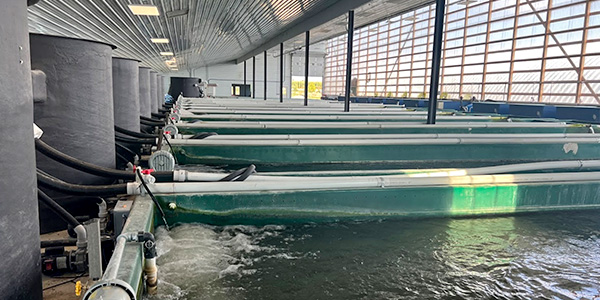Every Pond Needs a Shusui - The Blue Koi
Posted by Ellen Kloubec on 30th Apr 2015
Every Pond Needs a Shusui - The Blue Koi
If you’re collecting all varieties of Koi then your pond needs the addition of a Shusui. As the original Doitsu variety of Koi, Shusui brings a touch of blue to your pond.
Shusui (shū-swee) is a non-metallic light blue-gray koi with only Doitsu scales. The blue coloration is accented with Hi that appears below the lateral line. The blue skin of the Shusui’s body should be of even hue from the head to the tail, often called Robin Egg blue or pale sky-blue. This blue color should reach from the lateral line on its sides up to the spine. This body color should also extend through the fins of the koi, though the fins usually appear white rather than blue. These blue and orange koi fish are very popular and add a dynamic presence to a koi collection. Large Doitsu scales run along the spine from shoulder to tail and often called Zipper scales. These scales are generally a deeper shade of blue-gray color. Scales may also be present along the lateral line on some Shusui. Hi, red-orange color is generally present on the lower portion of the body of the Shusui and is often present on the cheeks as well. Hi should also extend into the joint of the pectoral fins and caudal (tail). Some Shusui also have Hi at the base of the dorsal fin. Some have no Hi at all. These are particularly favorable for koi keepers who yearn for blue.
History of Shusui
Shusui were first produced in the early 1900’s. A Japanese koi breeder crossed a Koi with a Doitsu mirror carp and the first Shusui was the result. Since that time the Shusui has become regarded as one of the premier varieties of Koi and a must-have for any serious koi collector. In most koi shows Shusui generally compete only against Koi of the same variety. Although, depending on the number of fish entered it is occasionally grouped together with Asagi, which is a scaled version of the Shusui. Both types of blue koi fish are also produced in Butterfly, sometimes called fantail, or longfin koi.
Other Variations of Shusui
Like other types of Koi, the Shusui can be found with some variations. When Hi appears as separate markings above the lateral line and shows on the top portion of the Koi it is called Hana Shusui. If the red color spreads all the way up to cover the back then it becomes a Hi Shusui. Pearl Shusui is the name given to the Koi if its Doitsu scales are the light reflecting Gin Rin type. If the skin is metallic then the term Kin proceeds its name; Kin Shusui. And when the Koi has elongated flowing fins it is called Shusui Butterfly.
What to Look for in Shusui
When viewing Shusui, decide what feature is your favorite. Are you drawn to the blue skin, or the Doitsu scales? If so, you should concentrate on those features. Look for clean skin without imperfections or random spots of pigment. (Keep in mind that often a Shusui’s color will darken with age.) If you have a fondness for the dark blue Doitsu scales then you should consider the scales for size, color and alignment. If you can’t get enough of the bright Hi on the fins or body, then focus on that feature. Does the color cover both cheeks and both pectoral fins? These are what you will see first when you feed the fish. Look for consistency and evenness of the Hi. Even Hi placement on both sides of the koi is significant as well as neatly aligned Doitsu scales.
Remember that symmetry is very important when evaluating koi, but you should always obtain Koi that you like and want to add to your pond.
Be sure to check out our illustrations of koi varieties on our website. Follow this link to view them all. http://www.kloubeckoi.com/ellens-koi-education/
You can also view our selection of Shusui here Shop Shusui
~EK


